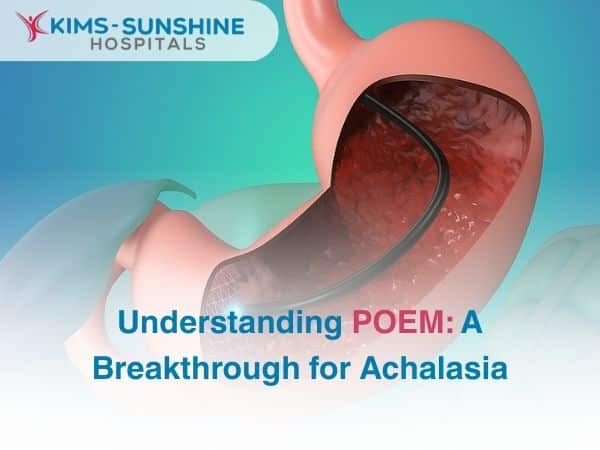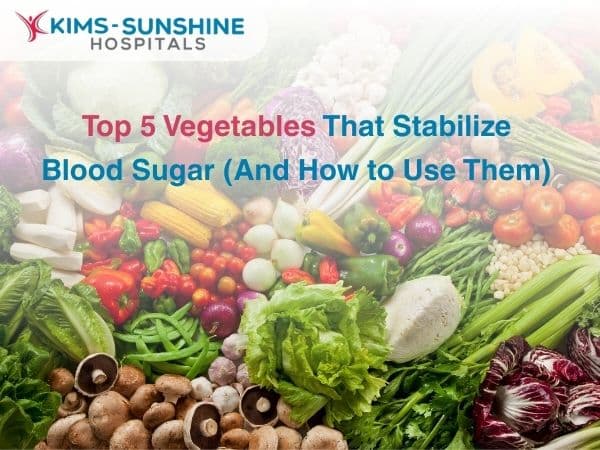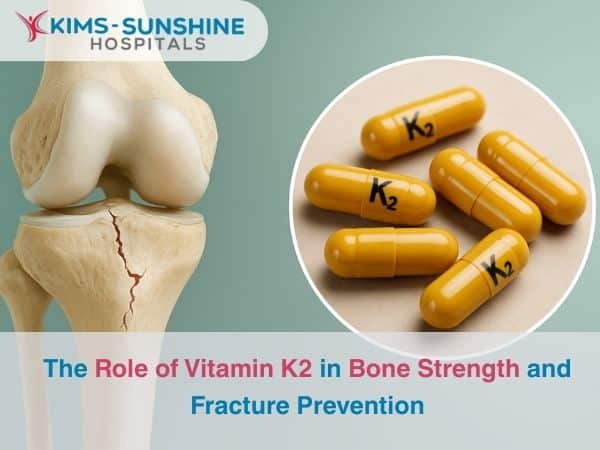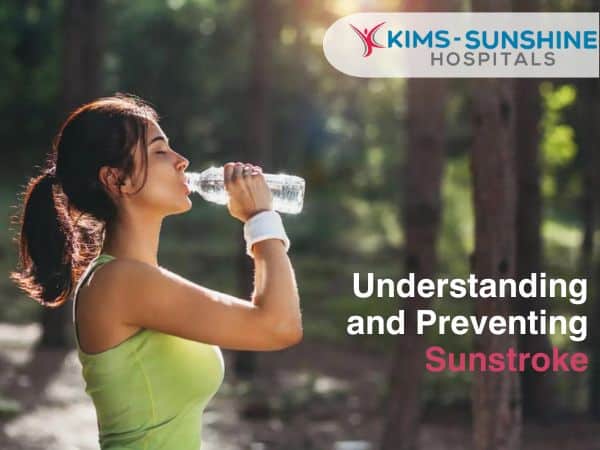
Understanding and Preventing Sunstroke
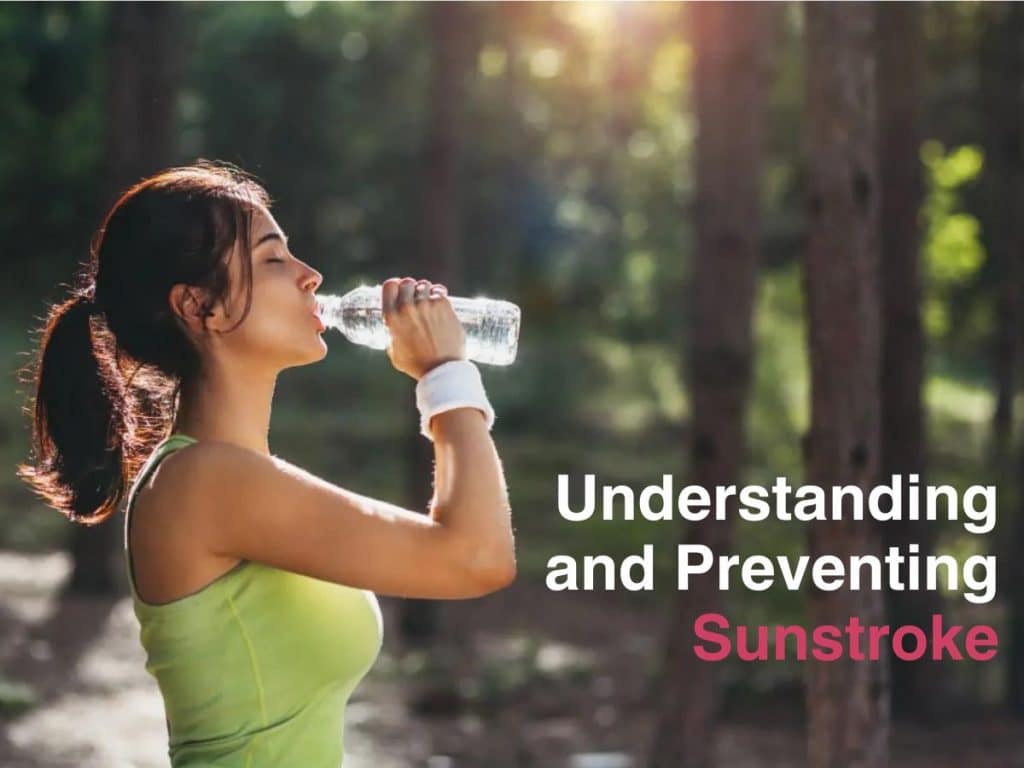
Summers are exhilarating, thrilling, fun, cumbersome, and exhausting all at once.
While long trips, ice creams, juices, and vacations may be highlights of the season, along comes with it the risk of – Sunstrokes!
Sunstroke, or heatstroke, arises when the body becomes excessively hot due to prolonged exposure to high temperatures.
This condition demands urgent medical attention to avert severe repercussions such as organ damage or fatality.
Read this guide to learn more about sunstrokes.
What are the first signs of sunstroke?
The initial signs of sunstroke include headache, dizziness, nausea, and vomiting.
As the condition progresses, the individual may experience confusion, irritability, rapid heartbeat, and shallow breathing.
The skin may become flushed and hot to the touch, or alternatively, it could be dry and lack perspiration despite the heat.
Severe cases may lead to unconsciousness, seizures, and even organ failure.
It’s crucial to recognize these symptoms and seek medical help promptly to prevent serious complications.
First-aid for sunstroke
If you find that your temperature is elevated more than usual, prompt first aid is essential.
Find a cool, shaded area and remove any unnecessary clothing.
Use cold water or damp cloths on the skin, focusing on areas like the neck, armpits, and groin, to help lower body temperature. If conscious and capable of swallowing, hydrate with water or electrolyte-rich beverages.
Seek immediate medical attention. Avoid direct application of ice to the skin to prevent additional harm.
How to treat sunstroke at home?
Treating sunstroke at home requires immediate action.
Rush the affected person to a cool and shady area.
Loosen clothing and apply cool, wet clothes to their skin, or use a fan to aid evaporation. Encourage sips of water or electrolyte-rich fluids if conscious and able to swallow.
Avoid beverages with caffeine or alcohol.
Monitor their condition closely and seek medical help if symptoms worsen or persist, especially if there’s vomiting, confusion, or a body temperature above 104°F (40°C).
Home treatment can provide initial relief, but professional medical evaluation is essential for severe cases to prevent complications.
What are the first signs of sunstroke in children?
Summer vacation is a great time to learn something new and just let go of kids. But everything needs to be in moderation- too much Vitamin D can be harmful for our little ones. In children, the first signs of heatstroke may include:
- Irritability or fussiness
- Excessive fatigue or lethargy
- Headache
- Nausea or vomiting
- Flushed or hot skin
- Rapid heartbeat
- Dizziness or weakness
It’s important to monitor children closely, especially during hot weather, and seek medical attention if any concerning symptoms develop.
Signs of sunstroke in elderly and their care
In the elderly, signs of heatstroke can be subtle but serious.
Watch for confusion, dizziness, rapid pulse, headache, and hot, dry skin. If you suspect heatstroke, move them to a cool area, loosen clothing, and hydrate. Apply cool compresses and seek medical help immediately.
Prevention is key: encourage staying indoors during peak heat, wearing light clothing, and staying hydrated. Regularly check on elderly loved ones during hot weather, ensuring they have access to shade and air conditioning.
Educate them about the dangers of sun exposure and the importance of staying cool and hydrated.
How long does sunstroke last?
The duration of heatstroke varies depending on its severity and promptness of treatment. Mild cases may resolve within a few hours with proper hydration and rest. However, severe cases can persist for days or even longer, especially if complications arise, requiring medical intervention and monitoring.
Difference between sunstroke and heat exhaustion
Sunstroke, or heatstroke, is a severe condition where the body’s temperature regulation fails, leading to potentially life-threatening consequences. Heat exhaustion is a less severe condition characterized by dehydration and overheating, often marked by symptoms like heavy sweating, weakness, nausea, and fainting, but typically resolves with rest and hydration.
Conclusion
Sunstroke is a serious condition that can have severe consequences if not promptly addressed. By understanding its signs and symptoms, taking preventive measures, and knowing how to respond effectively, we can minimize the risk and ensure a safer and healthier experience under the sun.
Stay safe, enjoy your summer and don’t forget to seek medical attention when needed.


